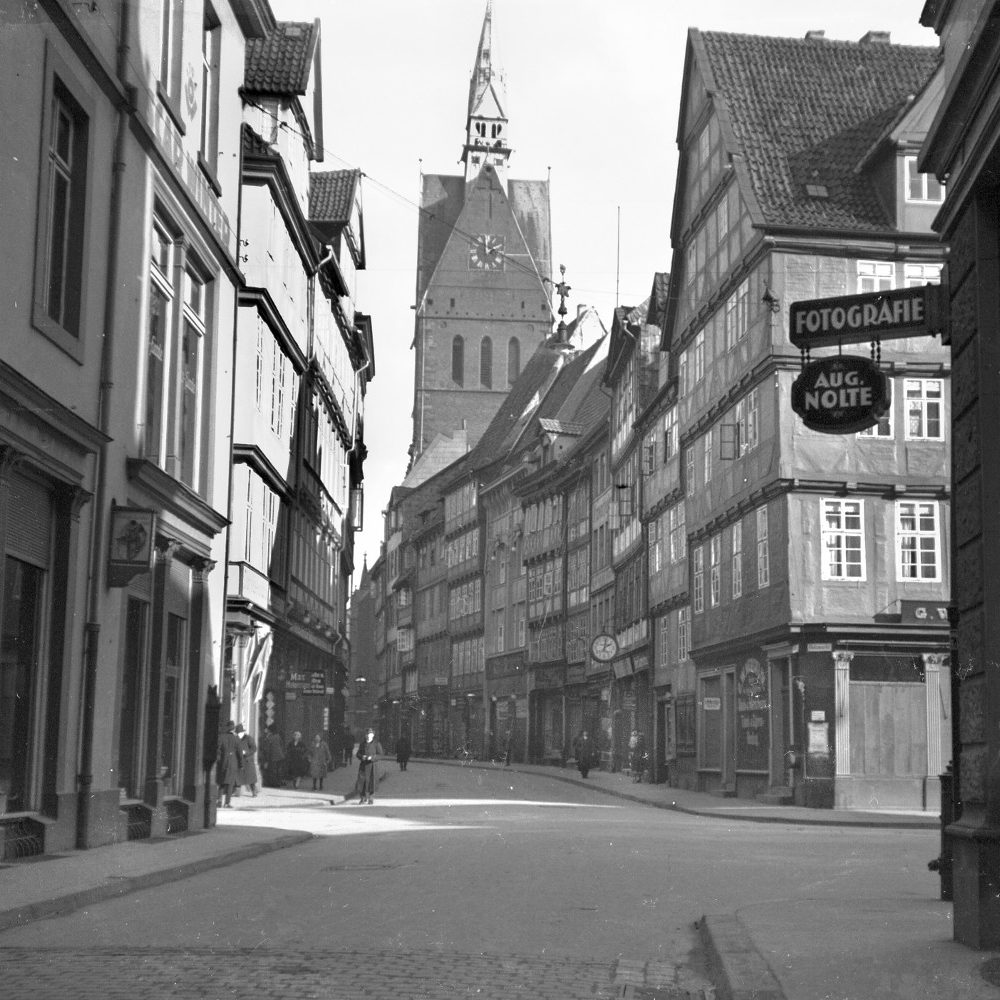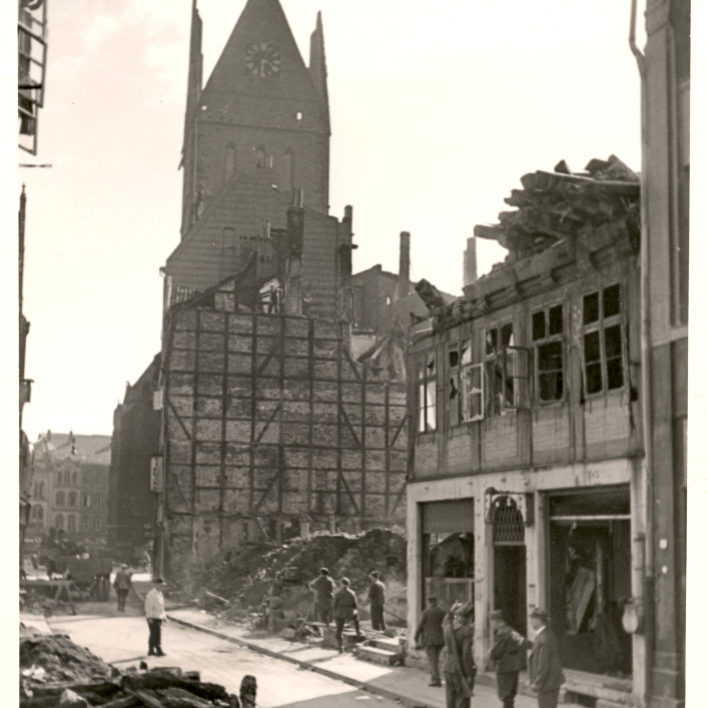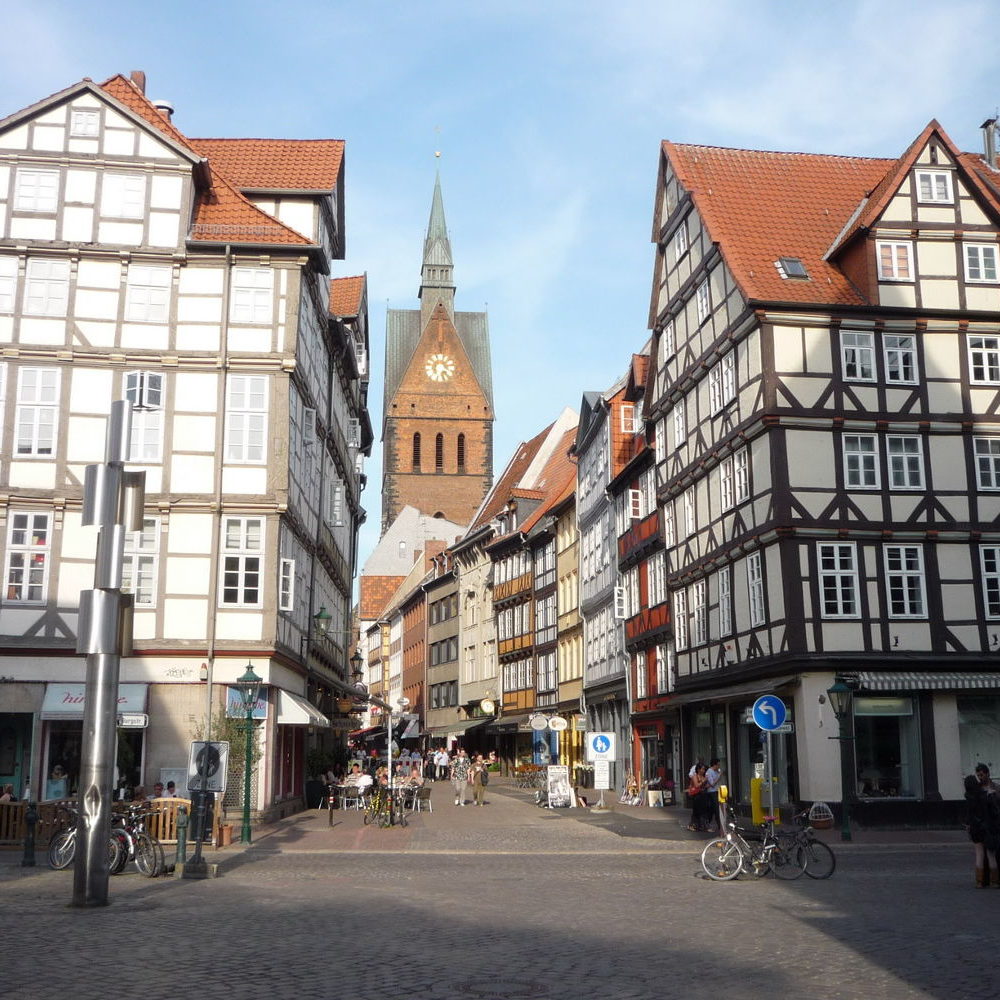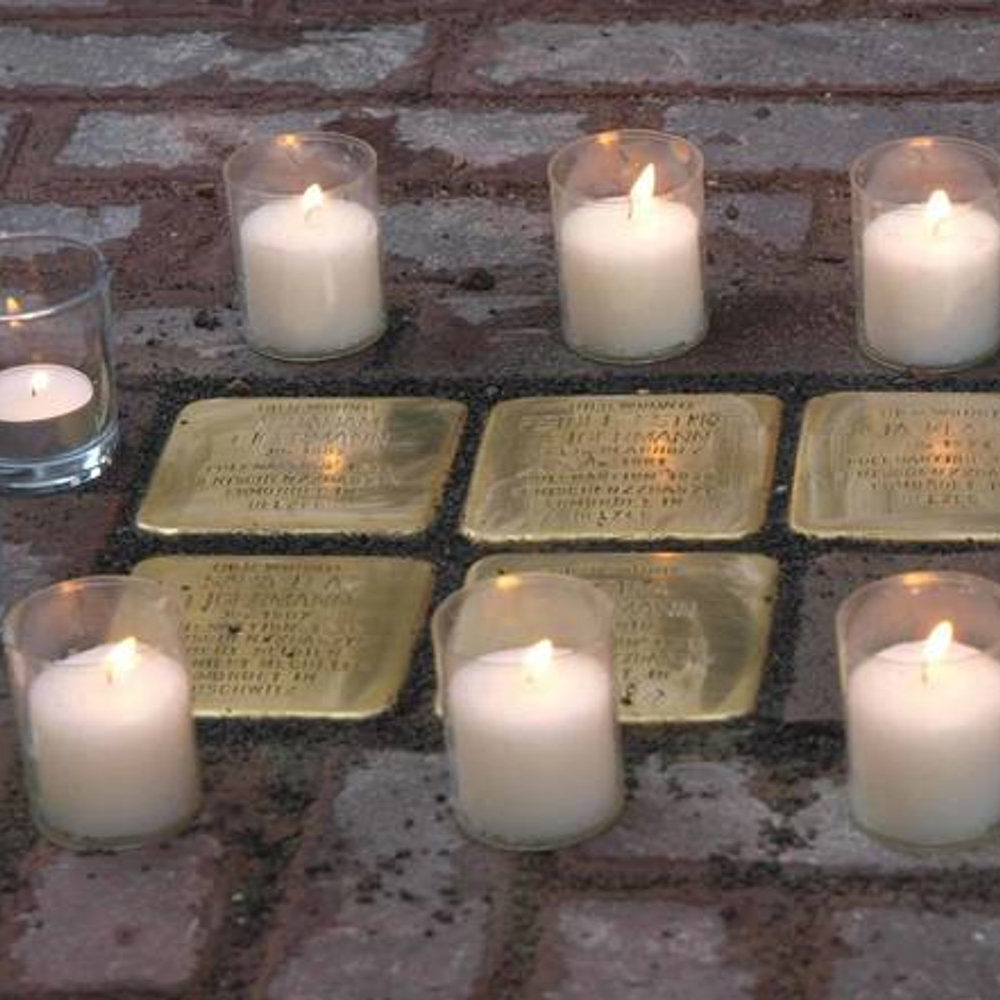This is where the large Jewish Eigermann family lived until their expulsion in October 1938. Three children succeeded in fleeing to Palestine. Stumbling stones set in front of the house commemorate the fates of family members murdered in the Holocaust.
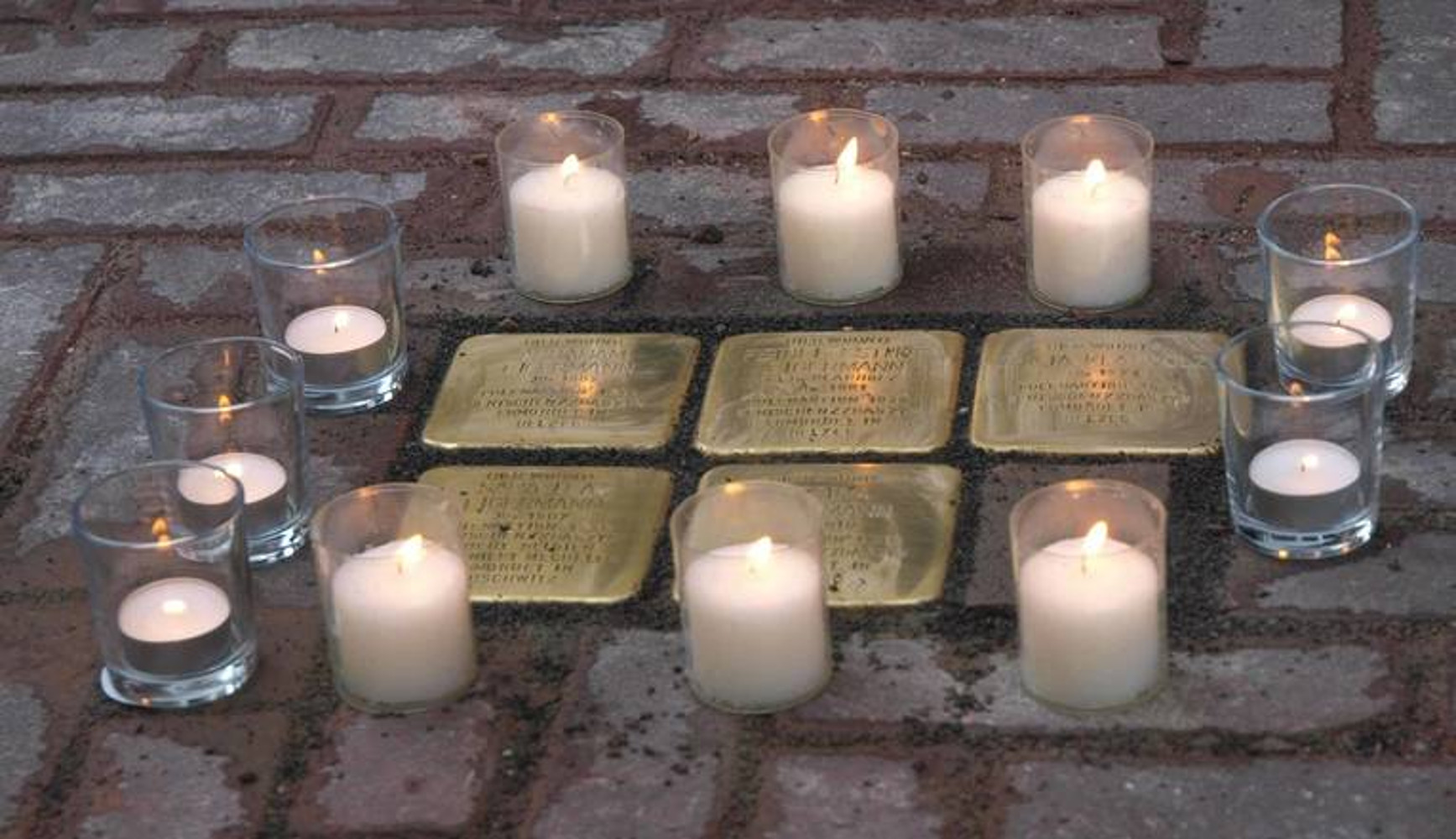
Life in Hanover’s Altstadt
In the address book of the city of Hanover from 1938, the entries for the narrow half-timbered house at Kramerstrasse 19 illustrate the typical occupational profile of this impoverished neighbourhood: widow, invalid, labourer, pest controller, grocer, etc. The merchant Abraham Eigermann is named as an occupant of the second floor [USA: third floor]. Before the First World War, he had left his homeland in Galicia [now a region spanning south-eastern Poland and western Ukraine] in fear of anti-Semitic pogroms; shortly afterwards, he brought his wife Feigel and their first child to Hanover. Five more children are born here. Abraham and Feigel Eigermann run a retail shop in nearby Burgstrasse. Later on, Feigel’s older sister, Chaja Klapholz, joins the household. “Eastern Jews” like the Eigermanns make up around 20 per cent of Hanover’s Jewish population after the First World War. They live mainly in the poor half-timbered districts of the Altstadt and Calenberger Neustadt.
Expulsion
In November 1918, Poland is re-founded as a state, meaning that the couple and their children are automatically deemed to be Polish citizens. Twenty years later, this will cost them their lives. A decree issued by the Polish Government threatens to deprive them of their citizenship as of 1 November 1938 if they reside abroad permanently. In Hanover, too, the Nazi regime uses the imminent statelessness as a pretext for the mass deportation of 28 October 1938. Together with a total of 484 Polish Jews, all the family members are taken by policemen to the large assembly hall of the “Rusthaus” in Burgstrasse. The next day they are taken by train to the Polish border. A total of approximately 17,000 Jews in the entire German Reich are affected by this. The National Socialist term for this is “Polenaktion” [“Polish Action”].
Many of the those expelled are interned by the Polish state in a former barracks with horse stables in Zbąszyń (known as Bentschen in German). In the winter of 1938/39, up to 8,000 people are held in the camp, where the hygiene conditions are catastrophic. It is known that following their expulsion to Poland, the Eigermann family live in Nowy Sącz (known as Neu-Sandez in German), the birthplace of the wife.
Death in the extermination camp
On 1 September 1939, the German Wehrmacht [armed forces] invades neighbouring Poland. This marks the beginning of the Second World War. The family is forced to live in the Jewish ghetto of Nowy Sącz. In August 1942, the ghetto is liquidated and the Eigermann couple together with their daughter Regina and Feigel’s sister Chaja Klapholz (Abraham’s sister-in-law) are gassed in Bełżec extermination camp.
Their daughter Sara Lea Eigermann had fled earlier from Poland to Belgium, where she had got married in 1941. One year later she is deported from German-occupied Belgium to Auschwitz where she is murdered. Three of her brothers manage to escape the persecution. Josef Eigermann, the eldest son of the family, had not been deported to Poland. From his home in Frankfurt am Main, he succeeds in securing safe passage to Palestine before the end of 1939. In the same year, his younger brothers Hermann and David flee illegally from Poland to the British Mandate of Palestine.
Additional online information
Wikipedia entry: East European Jews and West European Jews [in German]
Wikipedia entry: 1938 expulsion of Polish Jews from Germany
Culture of Remembrance Stolpersteine installed in Hanover [in German]
The Stolperstein Art Project Website
Further reading: Click here
Texts and images: Michael Pechel

